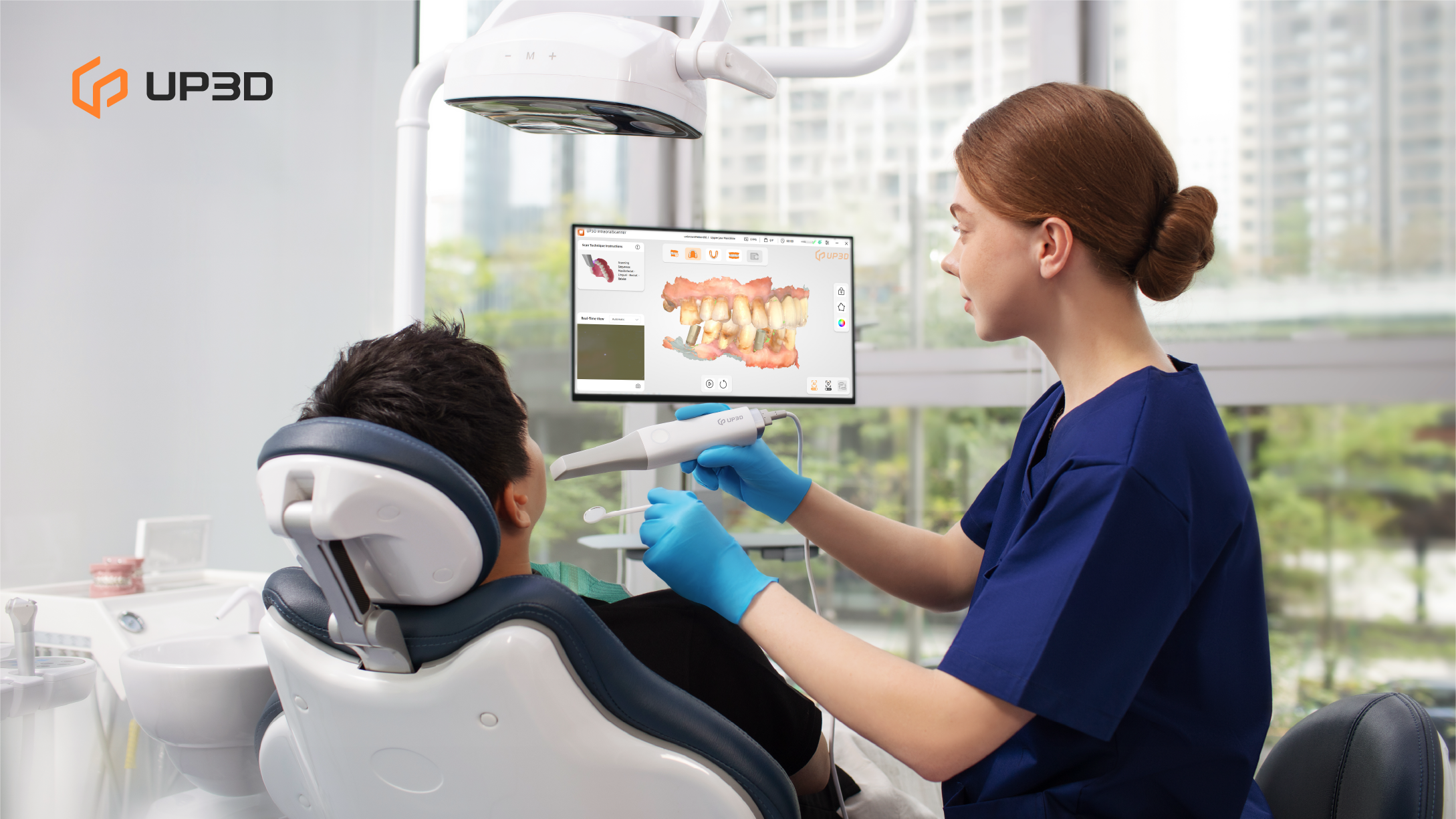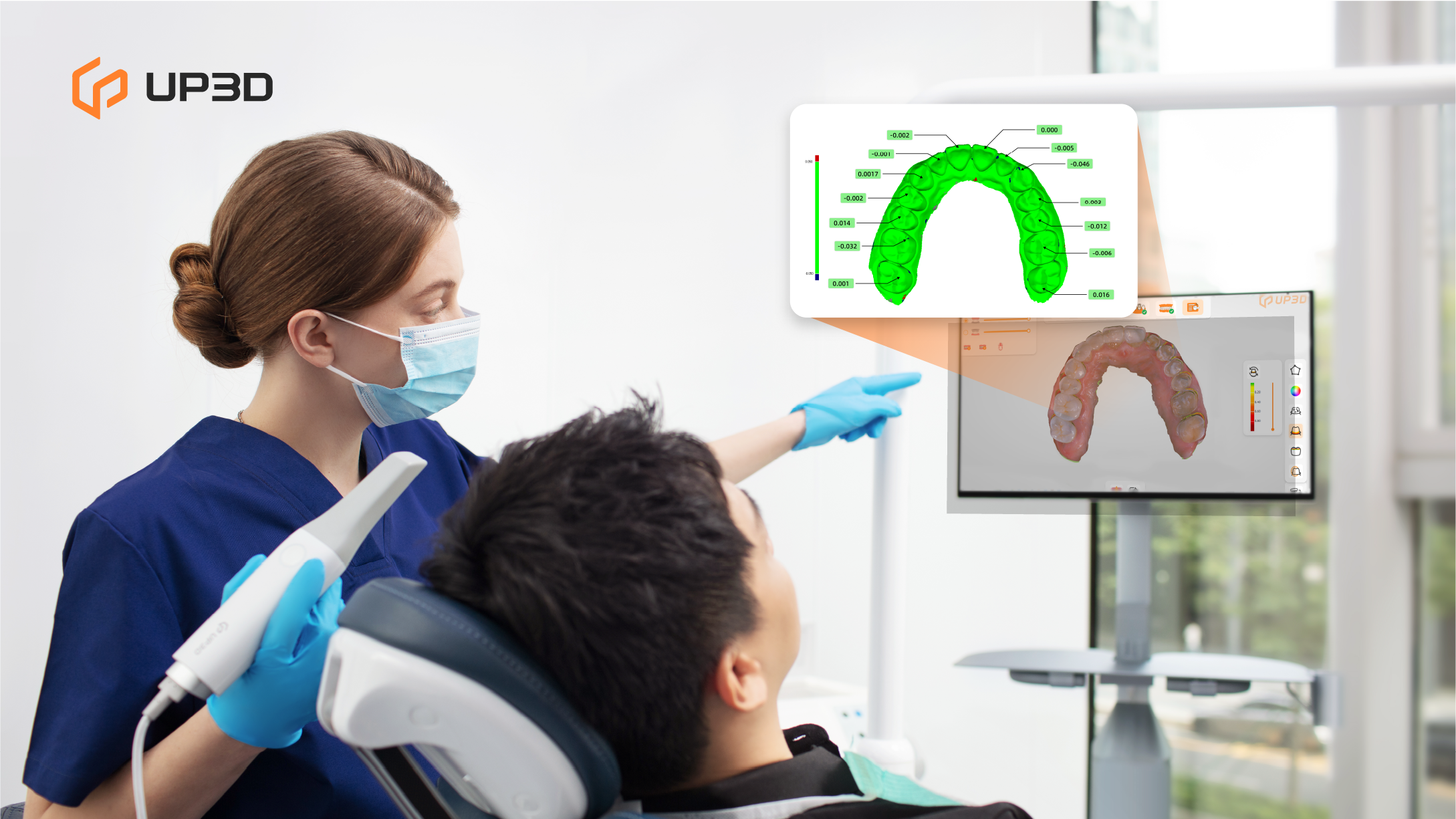For decades, dental impressions meant trays, silicone materials, and patient discomfort.
With the arrival of intraoral scanners (IOS), this traditional step has evolved into a fast, precise, and fully digital process.
By scanning the inside of a patient's mouth with a small handheld device, dentists can now generate detailed 3D models in minutes—completely eliminating the need for physical molds.
What Exactly Is an Intraoral Scanner?
An intraoral scanner is a digital imaging device designed to capture the 3D geometry of a patient's teeth, gums, and bite.
It uses optical sensors and structured light to record surface details, building a digital replica of the oral cavity.
This digital model replaces traditional impressions, providing highly accurate data for diagnosis, treatment planning, and restoration design.
The collected data is then processed by specialized software to create a full 3D color model.
This model can be viewed instantly on a computer screen, shared with a dental lab, or sent directly into CAD/CAM software to begin restoration design.
How It Transforms Clinical Practice
An intraoral scanner does more than digitize impressions—it transforms how clinics work.
Scans can be completed in just a few minutes, reducing chair time and improving patient comfort.
Digital files can be securely transferred to laboratories or in-house design systems, accelerating turnaround time for restorations.
Because every scan is stored digitally, it's easy to compare past and present data, monitor changes, and improve long-term case management.
This not only streamlines daily workflows but also enhances communication between clinicians, technicians, and patients.

Key Advantages of Intraoral Scanning
The advantages of using an intraoral scanner are both clinical and operational.
-
Comfort for patients: No more gagging or discomfort from impression materials.
-
Speed and efficiency: Scans are completed quickly and transmitted instantly.
-
Higher accuracy: Digital impressions minimize errors caused by human handling.
-
Improved hygiene: A cleaner, contactless workflow supports better infection control.
-
Eco-friendly: Reduces material waste and eliminates shipping for physical models.
-
Enhanced communication: 3D visualization helps patients understand their treatment and increases case acceptance.
These benefits make intraoral scanners one of the most valuable tools in modern clinics.
The Role of Software and Integration
An intraoral scanner is most powerful when integrated into a digital dentistry ecosystem.
The 3D data captured by the scanner can be imported into CAD software for virtual design, then transferred to CAM software for toolpath generation, and finally sent to a milling machine for production.
UP3D's open digital ecosystem allows seamless communication between every step—from scanning with the UP610 intraoral scanner to designing with UPCAD and milling with P55D or P53.
This integration creates a fully digital, efficient, and error-resistant workflow for both clinics and dental labs.

Why Every Clinic Needs an Intraoral Scanner
As dentistry moves toward a digital-first future, intraoral scanners are becoming standard equipment for new and growing clinics.
They enable faster, more precise, and more predictable outcomes while enhancing the overall patient experience.
In competitive markets, digital adoption also helps clinics stand out as innovative, patient-focused, and technology-driven.
Whether for routine restorative work, orthodontics, or implant planning, an intraoral scanner serves as the foundation of every digital workflow.
Looking Ahead: The Future of Digital Impressions
The future of intraoral scanning is intelligent and interconnected.
Artificial intelligence, real-time analysis, and cloud-based collaboration are redefining what scanners can do.
Soon, scanners will not only capture 3D data but also analyze it automatically, detect preparation margins, and suggest restoration options in real time.
UP3D is actively developing next-generation scanners that combine AI algorithms, deep learning, and ergonomic design—empowering dental professionals to work smarter, faster, and more accurately than ever.
Curious about how an intraoral scanner actually captures such detailed 3D images?
Read our next article: How Does an Intraoral Scanner Work?
Learn the step-by-step process behind digital scanning and see how it connects seamlessly to UP3D’s digital workflow.
Final Thoughts
An intraoral scanner is more than just a piece of equipment—it's the heart of digital dentistry.
By replacing traditional impressions with precise 3D data, it enhances efficiency, improves patient comfort, and sets the foundation for modern dental workflows.
For clinics looking to upgrade their technology and deliver outstanding results, adopting an intraoral scanner is not just a smart decision—it’s a necessary step toward the future.
Explore UP3D's Intraoral Scanning Solutions
Experience the power of digital dentistry with UP3D's UP610 intraoral scanner, designed for accuracy, efficiency, and simplicity.
It's not just a tool—it's your gateway to a fully digital workflow.
Learn more about UP610 →

